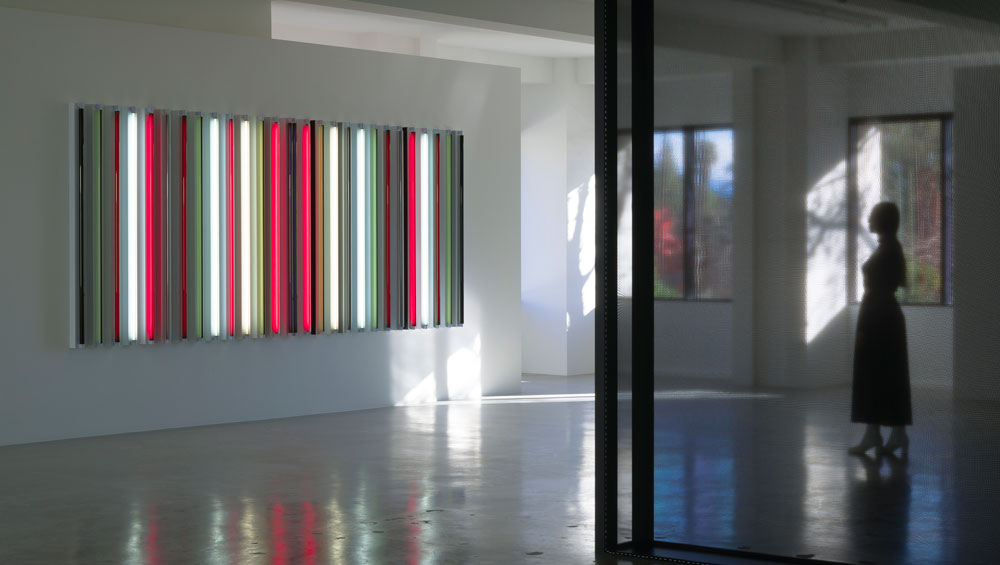
Sprüth Magers, Los Angeles
23 January – 21 April 2018
by HATTY NESTOR
Through using natural landscapes, installation, paintings and the medium of light, Californian artist Robert Irwin (b1928) has experimented with perception since the 1950s. His abstract expressionist works, his more rigorous and optical dot paintings in the early 60s, and the elusive Disc Paintings (1967-69) all present a painterly concern with perceptual phenomena. Irwin was a member of the Ferus Gallery in Los Angeles, where, in the 1960s, alongside artists such as James Turrell and John Baldessari, he shared a fascination with the west coast light and space movement. Irwin’s treatment of the transcendental or subliminal aspects of light continually invites the viewer to reconsider their ownperceptual encounters and orientation. He asks us to envision our own mediations of what internal and external art might be. It is these concerns with light, experience and immersion that are acutely apparent in his most recent exhibition at Sprüth Magers, Los Angeles.
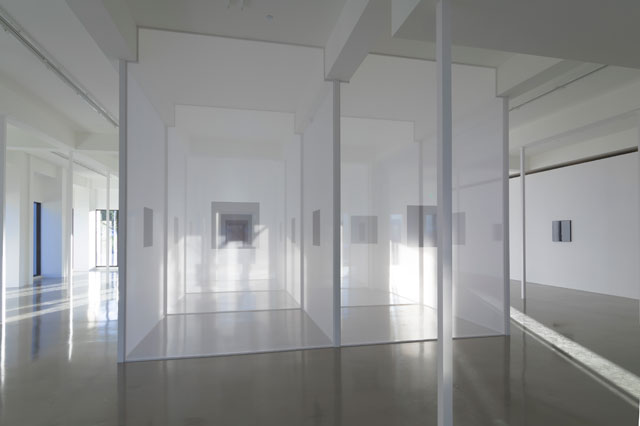
Robert Irwin. Installation view, Sprüth Magers, Los Angeles, January 23 - April 21, 2018. Courtesy the artist and Sprüth Magers. Photograph: Robert Wedemeyer.
Much like Irwin’s 1974 installation Soft Wall at the Pace Gallery in New York, the exhibition at Sprüth Magers asks us to confront our personal and ephemeral experiences of installation art. On entering the gallery, I am met by a reconstruction of the gallery’s architecture. The walls have been removed to accommodate Irwin’s installation Untitled (2017-18), exposes the large windows installed since the gallery’s reopening in 2016. Untitled feels somewhat layered in its understanding of space, aesthetics and experience; it uses the space as an artistic platform – which is precisely the intention of immersive art. Yet despite feeling entrenched in the installation, I still physically stand outside it. I can’t help but wonder, how does this differ from the two-dimensional experience found in mediums such as painting?
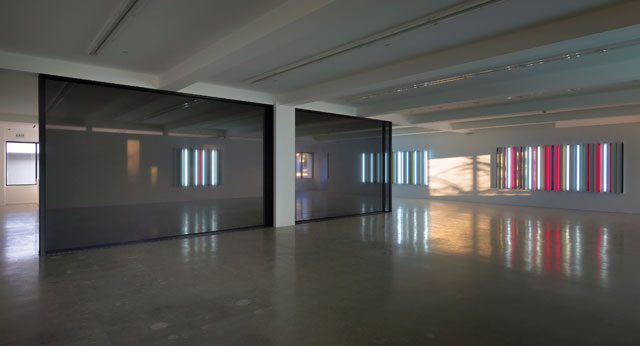
Robert Irwin. Installation view, Sprüth Magers, Los Angeles, January 23 - April 21, 2018. Courtesy the artist and Sprüth Magers. Photograph: Robert Wedemeyer.
The installations organisation of space illustrates Irwin’s preoccupation with perception. The transparent installation acts as a playback mirror to those who encounter it, allowing the viewer to move through the gallery with physical ease, witnessing their own movements. The scrim, which is the installations material form, acts like a chamber lengthening the ceiling and walls. This scrim, which acts as a void of translucent white substance, is calming, yet powerful. This blurring of boundaries, and the inherent attention placed on the spectator, make the simplicity of perception, and the different ways we can explore it, paramount. There is a freedom in these works; a feeling of autonomy and agency, perhaps enforced by the immersion inherent to the installation – as viewers, we move through it, yet stand separately from it; which is what Irwin wants us to experience and, indeed, do – to question our own phenomenological experiences.
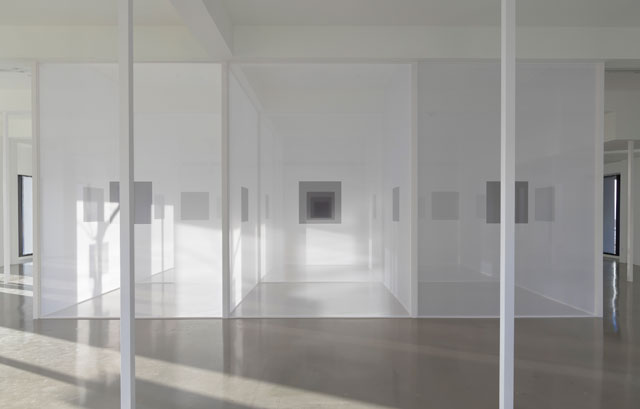
Robert Irwin. Installation view, Sprüth Magers, Los Angeles, January 23 - April 21, 2018. Courtesy the artist and Sprüth Magers. Photograph: Robert Wedemeyer.
What can art tell us about not only moving through space, but also relating to others? Critic Lawrence Weschler has written extensively about Irwin’s practice, and how it creates a collective experience of aesthetics. In 1982, he wrote Seeing Is Forgetting the Name of the Thing One Sees, a book in whichhe discussed how Irwin’s work allows us to consider perception as something “infinitely complex, dynamic whole envelope of the world and our being in it”. I use this to reiterate the importance of Irwin’s work, and what it prompts us to do not only individually, but also societally. Which is to say the possibilities of how we interact and encounter the work are collective and interpersonal. And, in turn, so are the perspectives we orchestrate in relation to one another, and the world.
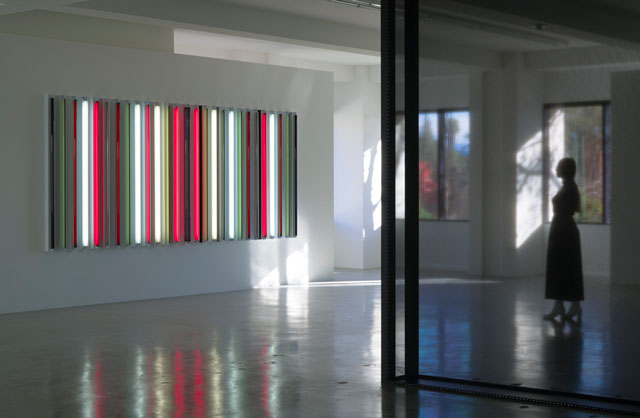
Robert Irwin. Installation view, Sprüth Magers, Los Angeles, January 23 - April 21, 2018. Courtesy the artist and Sprüth Magers. Photograph: Robert Wedemeyer.
In 1983, Irwin embarked on one of his largest, and most immersive, outdoor site conditional installations, Two Running Violet V Forms. There are stark similarities between this work and the wall pieces found in the second room of the current exhibition. As I enter the upstairs level of the gallery, the colours and composition change dramatically from downstairs. Four works are exhibited here: Mint Condition (2015), Misty Miss Christy (2017) (named after the singer June Christy), Faust (2015) and Shorty George (2015). These light installations are all similar in medium, yet there are slight differences in colour – greens, greys, and reds all fill the horizontal lights. The forms are mesmerising; I am struck by their ability to lure the viewer closer to the wall on which they are placed. Each light sits in opposition to one another, so when we look at one of the light installations, they feel in conversation with one another and not mutually exclusive. It is also interesting to consider their titles, three of which seem to reference people, giving the works a sense of identity and personality.
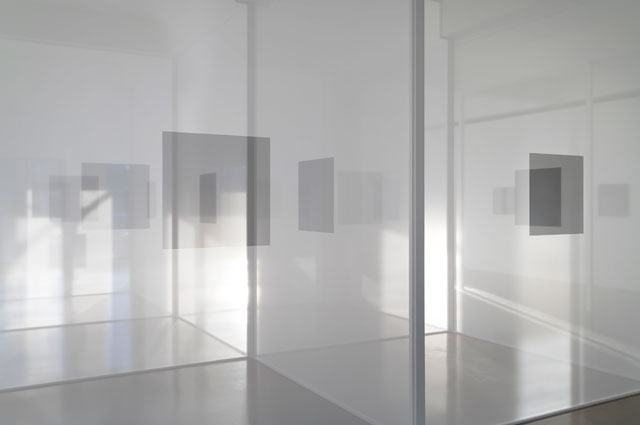
Robert Irwin. Installation view, Sprüth Magers, Los Angeles, January 23 - April 21, 2018. Courtesy the artist and Sprüth Magers. Photograph: Robert Wedemeyer.
Back down the stairs, the tranquil experience of both works leaves an imprint of calm. It is an unusual experience to feel that an artist has transformed the whole gallery into a singular work. In the past, Irwin’s practice has not always employed tangible objects as such; instead, he uses the pre-existing conditions of an environment and its capability of bringing modes of perception to overcome the subject-object paradox prominent in constituting perceptual experience. What is interesting about this exhibition is that he has managed to fuse tangible objects as an interesting mediation on the gallery space.
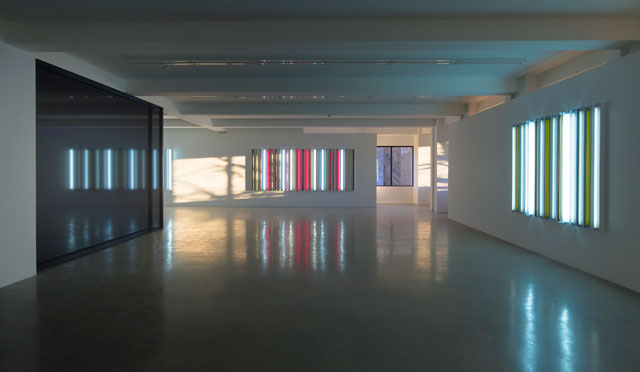
Robert Irwin. Installation view, Sprüth Magers, Los Angeles, January 23 - April 21, 2018. Courtesy the artist and Sprüth Magers. Photograph: Robert Wedemeyer.
On leaving, I am reminded by the press release that Irwin's exhibition is open only during daylight hours, reaffirming his overriding concern with the presence of temporality. The works are not only about light, but they depend on its qualities in order to come to fruition. Although, to some degree, this exhibition does not differ from the form apparent in many of Irwin’s earliest works (such as his 2006 Who’s Afraid of Red Yellow and Blue), they still execute a similar investigation into the tangibility of bodily experience. Yet it is never suggested blatantly, which is precisely why these works allow us to move continuously and re-orientate ourselves around them. Irwin questions the notion of what is conceived as art, and uses the environmental conditions of a location and the diametric properties of light as tools to illustrate his fascination with the world and our orientation within it.
Irwin attempts – in a myriad of forms and artistic ways – to reimagine what spatiality is, or could be,for the viewer. It is this exploration into how we perceive the world in Irwin’s work that renders it timeless, allowing us to have a different experience of art with each encounter.
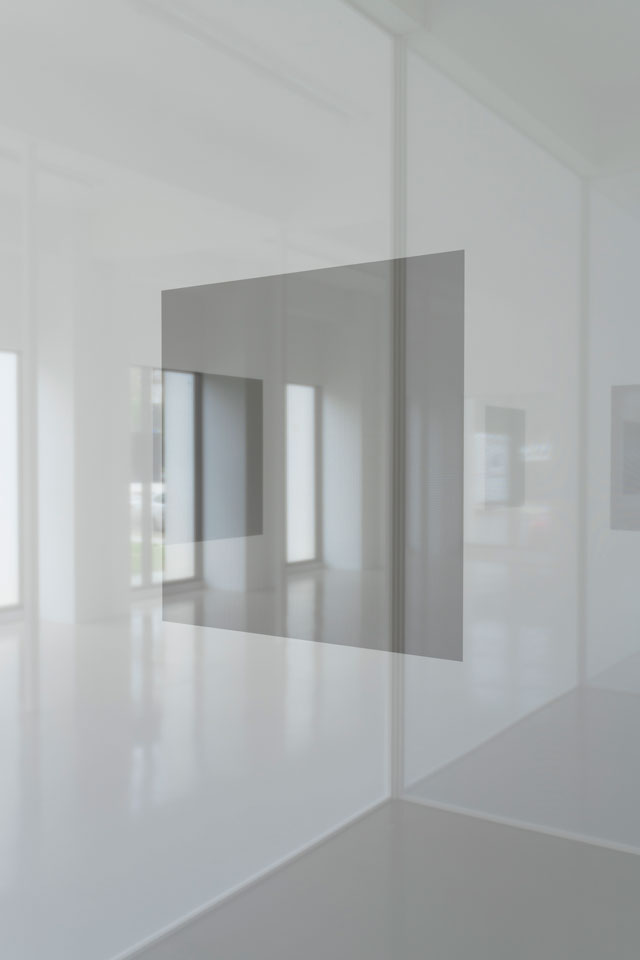
Robert Irwin. Installation view, Sprüth Magers, Los Angeles, January 23 - April 21, 2018. Courtesy the artist and Sprüth Magers. Photograph: Robert Wedemeyer.